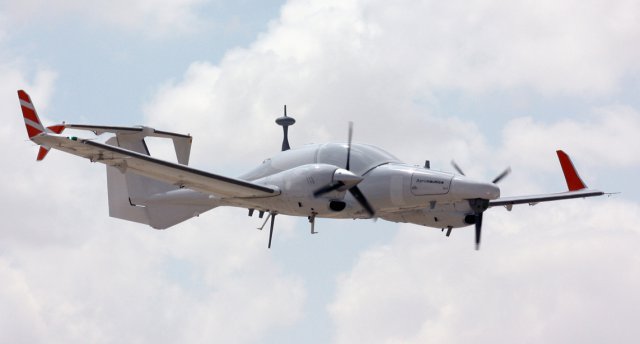and Aeronautics have announced that the first series of flights of the Miskam unmanned aircraft system (UAS) have been conducted successfully over the past several weeks at the UAS Centre of Excellence (Centre d’excellence des drones) located at Alma airport in Quebec, Canada.
The demonstration flights represent the first phase of a research and development (R&D) project aimed at demonstrating how unmanned systems can be used for civil applications such as remote inspection of pipelines and hydroelectric installations, surveillance of forest fires, observation of critical natural resources, assessing natural disasters and a range of other applications.
CAE and Aeronautics signed a teaming agreement last year to initiate what is now known as Project Miskam. During a series of preparation flights over the past several weeks, Aeronautics operated the Miskam UAS around the Alma airport area. The use of the Miskam UAS in civilian airspace is being conducted under the supervision of Transport Canada, NAV CANADA, and 3 Wing Bagotville. Transport Canada issued Aeronautics and CAE a special flight operating certificate last year to begin demonstration flights at the UAS Centre of Excellence in Alma.
“The successful operation of the first few flights of the Miskam UAS is a milestone for the project, but only the first of what we believe will be many milestones,” said Pietro D’Ulisse, CAE’s Vice President and Business Leader – Canada. “Much like the use of simulation in training, the use of unmanned systems for a range of civil applications has the potential to enhance safety, increase efficiency, and save money. We look forward to continuing to work closely with Aeronautics, regulatory authorities, and potential customers as we demonstrate these capabilities.”
The Miskam UAS is a Canadian version of the Aeronautics Dominator XP. This medium-altitude long endurance (MALE) UAS is based on a Diamond DA-42 twin-engine aircraft that has accumulated more than half a million flying hours, making it one of the most reliable and safe UASs worldwide. The Miskam UAS can cover long ranges, flying up to 24 hours, and can carry a significant payload weight while airborne. Combined with a range of sensors suitable for civil, homeland security, and defence market requirements, the Miskam UAS will be used to demonstrate a range of services.
CAE is leveraging its modeling and simulation technologies as well as in-service support capabilities to develop a comprehensive offering of unmanned intelligence, surveillance, and reconnaissance (ISR) services. The vast amount of information and intelligence that can be gathered by sensors on the Miskam UAS can be collected in a simulation-based synthetic environment and then used to support intelligent decision-making based on integrated information.
“We are very excited to be working closely with CAE and the entire team in Canada to showcase our UAS capabilities as part of Project Miskam,” said Avi Leumi, CEO of Aeronautics. “As potential customers and the general public at large begin to understand the tremendous benefits offered, we expect the use of unmanned systems to become more widespread.”
CAE is a global leader in modeling, simulation and training for civil aviation and defence. The company employs more than 7,500 people at more than 100 sites and training locations in over 25 countries. Through CAE’s global network of 34 civil aviation, military and helicopter training centres, the company trains more than 80,000 crewmembers yearly. CAE’s business is diversified, ranging from the sale of simulation products to providing comprehensive services such as training and aviation services, professional services and in-service support. The company applies its simulation expertise and operational experience to help customers enhance safety, improve efficiency, maintain readiness and solve challenging problems. CAE is now leveraging its simulation capabilities in new markets such as healthcare and mining.
Source: Press Release

